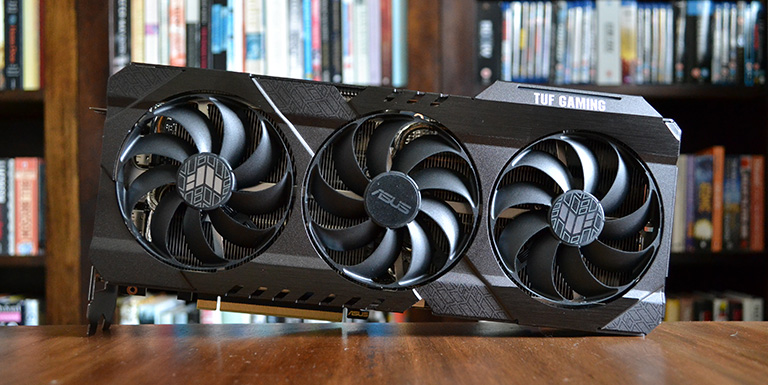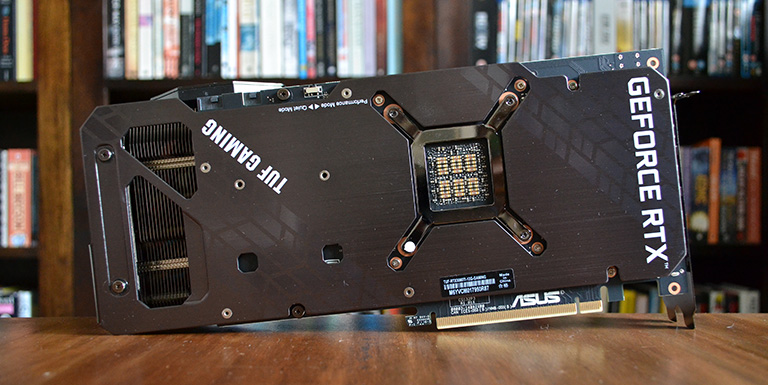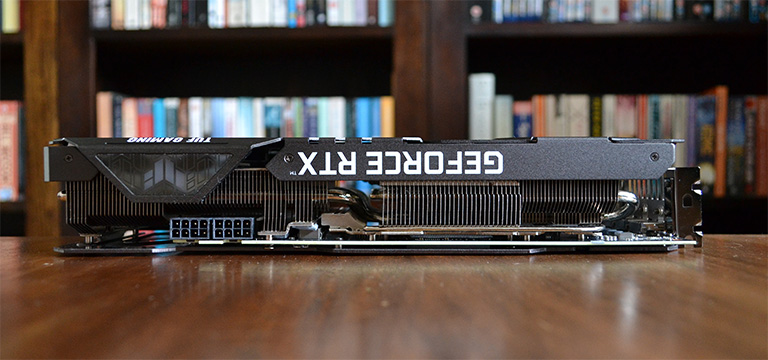Introduction
We know what you're thinking. Another GeForce RTX 3080 Ti review for a card that you cannot readily buy. The stock situation isn't as dire as a few months' ago, however, and if you really want a high-end card, it's now possible to find multiple RTX 3090 and RTX 3080 Ti in stock and ready to ship, albeit with inevitable price premiums over supposed RRPs.
Asus got in touch and offered us the chance to take the TUF Gaming GeForce RTX 3080 Ti for a spin. Normally of reasonable interest, what really piqued our attention was email missives detailing how the Taiwanese giant is working hard with retailers to offer this monster at RRP prices. Let's first take a look at the card and then evaluate whether the Asus stock and pricing claims have any merit.
You've seen me before on HEXUS pages, right? That is indeed the case as this behemoth uses the same cooler as the RTX 3080 and RTX 3090 TUF models. That's no bad thing as those cards strike a fine balance between form and function.
Prosaic stuff out of the way first. 300mm long, 127mm high and 52mm thick, it's considered large but not ridiculous. Asus describes it as a 2.7-slot card: ignore that and think of it as a three-slot beastie. We have absolutely no problem with the dimensions because RTX 3080 Ti offers neither SLI capability nor top-notch mining performance. Almost all users will accommodate a single card into their chassis. Heck, even a four-slot model would do.
The back is closer to RTX 3080 than RTX 3090. We know this because of the missing NV-Link connector on the top-right. We don't like the exposed back of the GPU but Asus curries favour by having dual BIOSes. At stock, the card matches the Founders Edition frequencies by operating 10,240 cores at a Game Clock of 1,665MHz, which actually runs at 1,860MHz in our test system. Asus software is able to inch up the basic clock to 1,695MHz (1,875MHz real-world) yet that provides little in the way of framerate boost. That BIOS switch, meanwhile, reduces frequency by around 75MHz in the name of lower noise through a quieter fan profile. Memory is left at a stock 19Gbps in every scenario.
Good marks to Asus for excellent build quality and smooth fan(s) transition from off to on. The rise in speed is gradual and barely perceivable in a quiet system. Do understand the trio of spinners need to work quite hard to tame the 350W GPU; our logs reveal 2,060rpm at full chat.
Asus is also sensible in the power department. There's no reason to cause cabling consternation by demanding a third 8-pin connector, meaning total board power is limited to 375W here. In keeping with the minimalist TUF mantra, even the RGB implementation is attractive and restrained.
This side-on shot reveals that Asus uses heatsinks over all the hot-running components. The PCB actually ends right by the power connectors, so Asus, like Nvidia, also harnesses through-the heatsink cooling on the left-hand side.
Slapping so much metal on a card balloons weight to 1,410g. Such a figure is restrained by high-end GeForce standards, and the build quality enables Asus to do without any form of supporting arm.
On to the crux of the review: pricing and availability. Good news is that, at the time of writing, the card is showing as in-stock at a couple of retailers. The bad news is that it's listed at £1,649, which has to be way over RRP as Nvidia's own Founders Edition ships with a base price of £1,049.
At £1,649 this card makes no sense when RTX 3090 are showing up from £1,800. Until Asus can show us multiple vendors listing this card for, say, £1,200, we are disinclined to believe the company's original claims.
We know the card is well-built and subjectively attractive, let's now see how it performs against high-specification peers.













